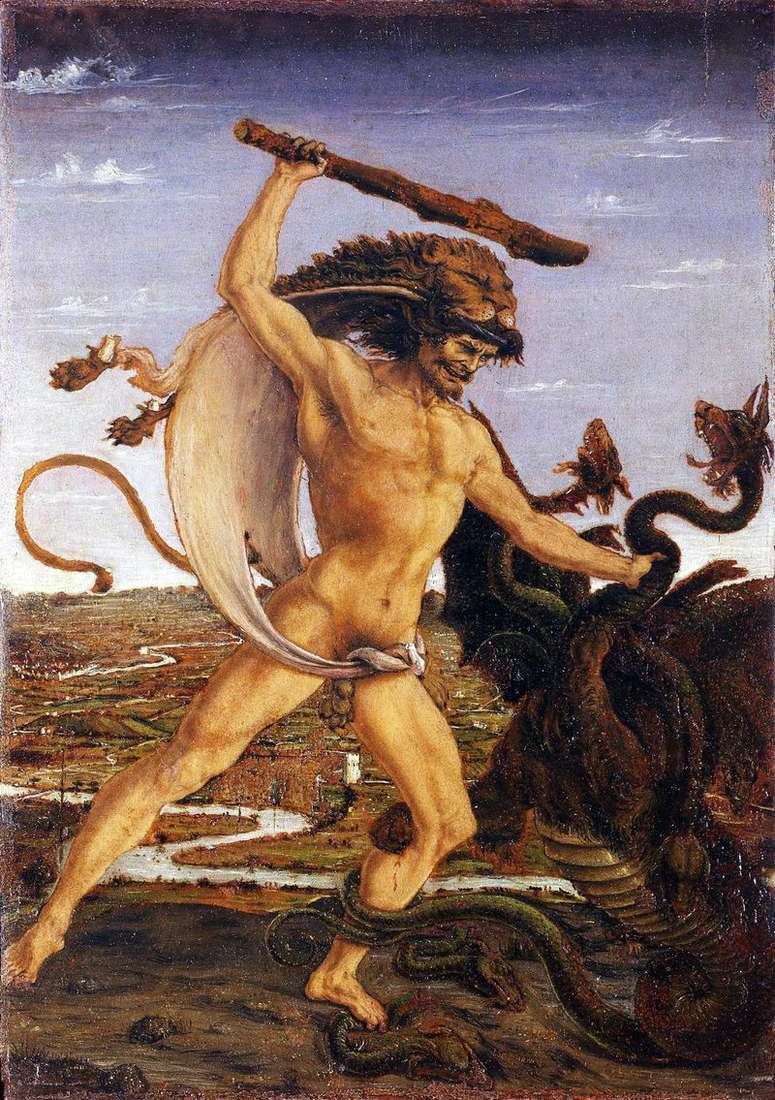
The small picture of Antonio Pollaiolo, a Florentine painter of the Quattrocento era, depicts one of the exploits of the ancient Greek hero Hercules, or Hercules. The second tablet with a composition on this myth is also in the museum.
The researchers suggest that both works are sketches for large paintings, which ordered the artist Piero Medici, or their reduced copies. But they can be independent works, and then all the more it should be noted that Pollayolo managed to endow so small an image with monumentality.
As a plot, the master took that part of the myth of Hercules, in which he fights with the Lyrhenian hydra, a giant snake that had many heads and one of them was immortal. The artist transmits the tension of the battle, depicting the hero’s swollen muscles and a desperate facial expression. Work is full of movement.
The strength and power of Hercules are underlined by the landscape far below and the fact that the main character is placed against the sky. But at the same time, the painter was clearly fascinated by the beautiful and elastic lines of draperies, the snake body, and the curling ribbons of the river, which create a complex pattern in the work.
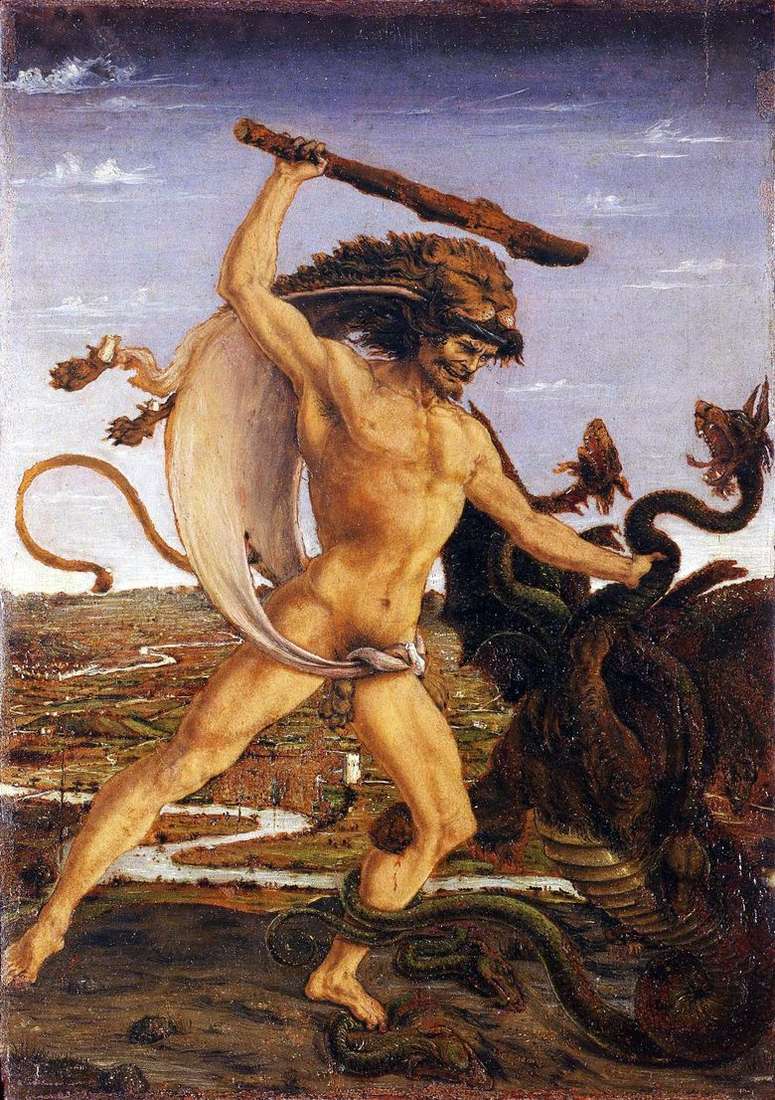 Hércules y la hidra – Antonio del Pollaiolo
Hércules y la hidra – Antonio del Pollaiolo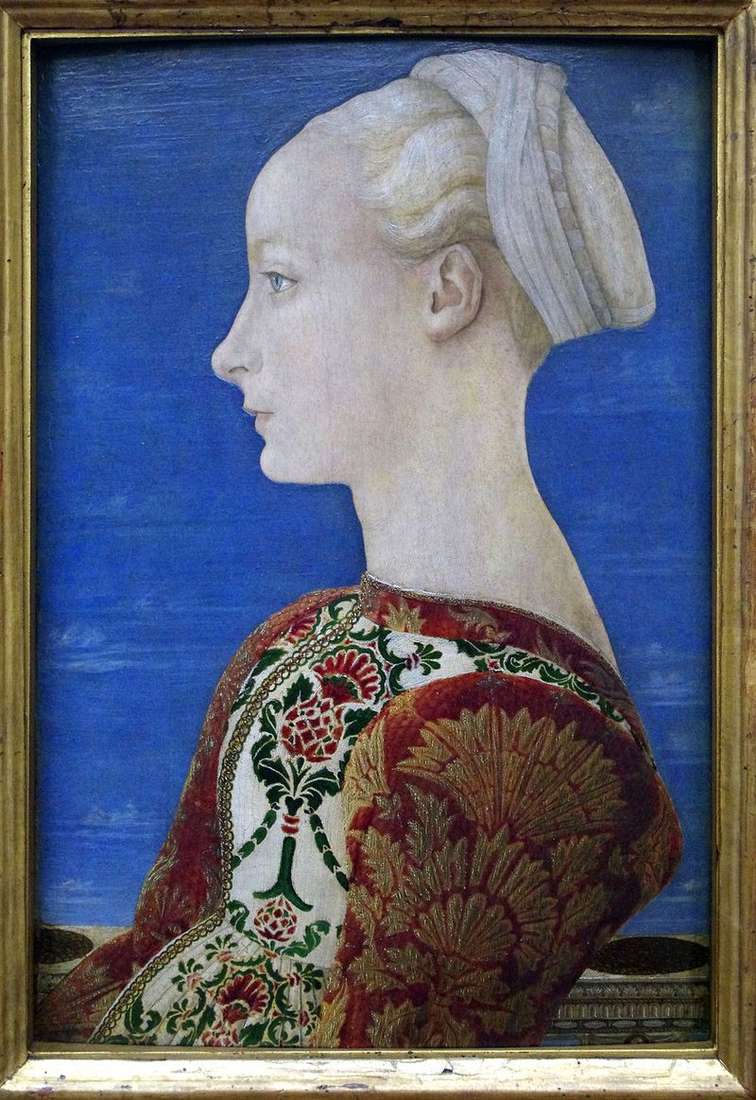 Portrait of a young woman in the left profile by Antonio del Pollaiolo
Portrait of a young woman in the left profile by Antonio del Pollaiolo The Martyrdom of St. Sebastian by Antonio del Pollaiolo
The Martyrdom of St. Sebastian by Antonio del Pollaiolo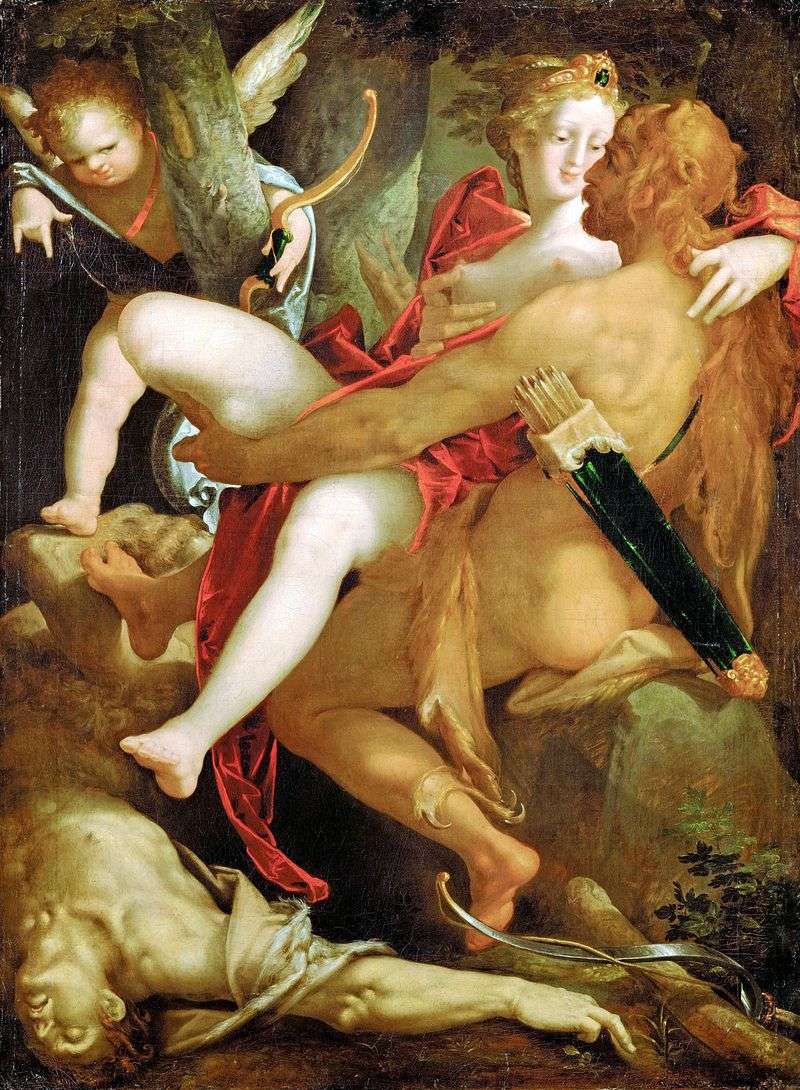 Hercules, Dejanira and the dead centaur Ness by Bartholomeus Spranger
Hercules, Dejanira and the dead centaur Ness by Bartholomeus Spranger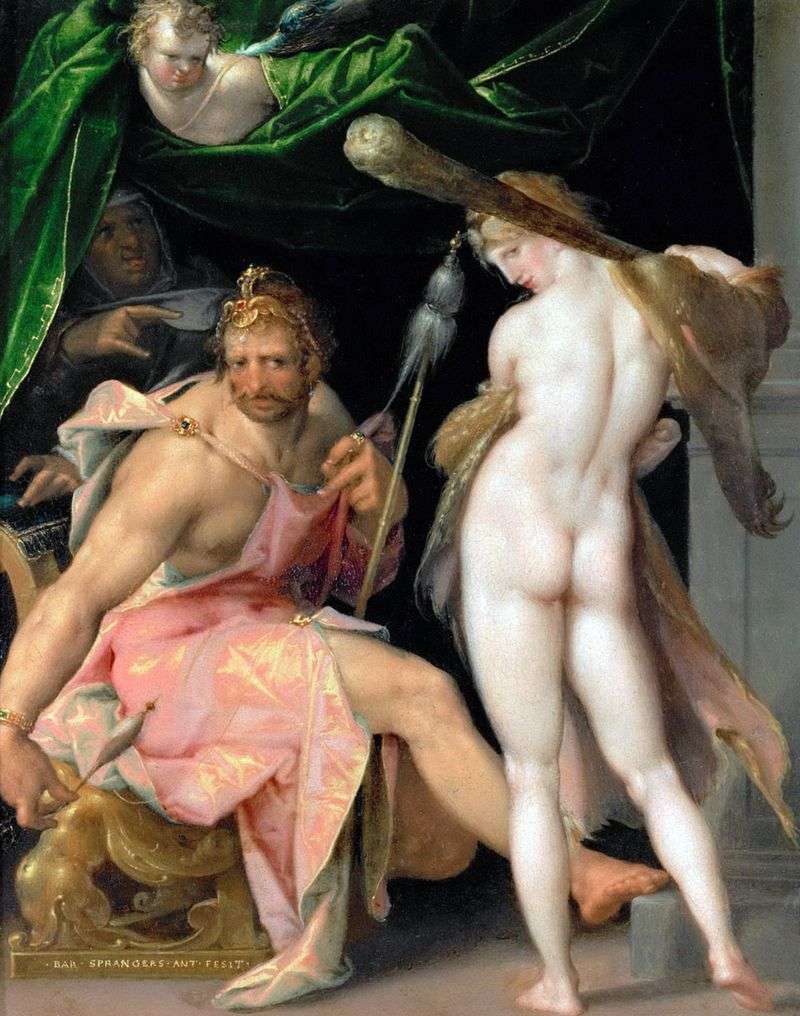 Hercules and Omphala by Bartholomeus Spranger
Hercules and Omphala by Bartholomeus Spranger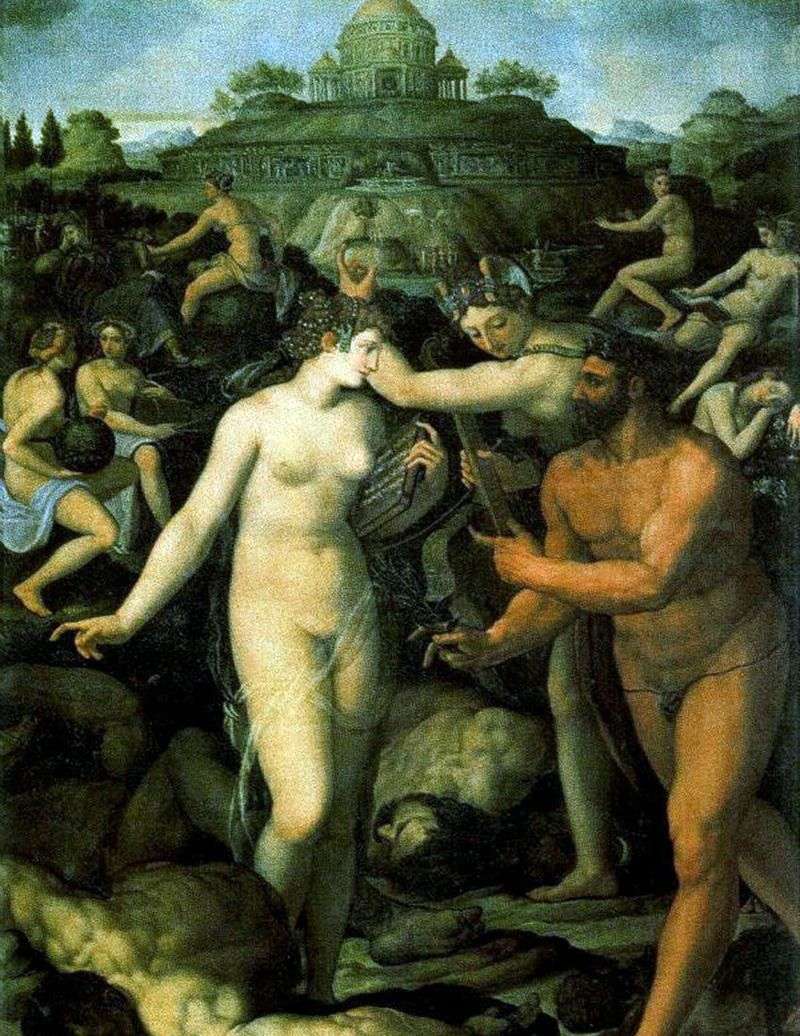 Hercules and the Muses by Alessandro Allori
Hercules and the Muses by Alessandro Allori Retrato de una joven en el perfil izquierdo – Antonio del Pollaiolo
Retrato de una joven en el perfil izquierdo – Antonio del Pollaiolo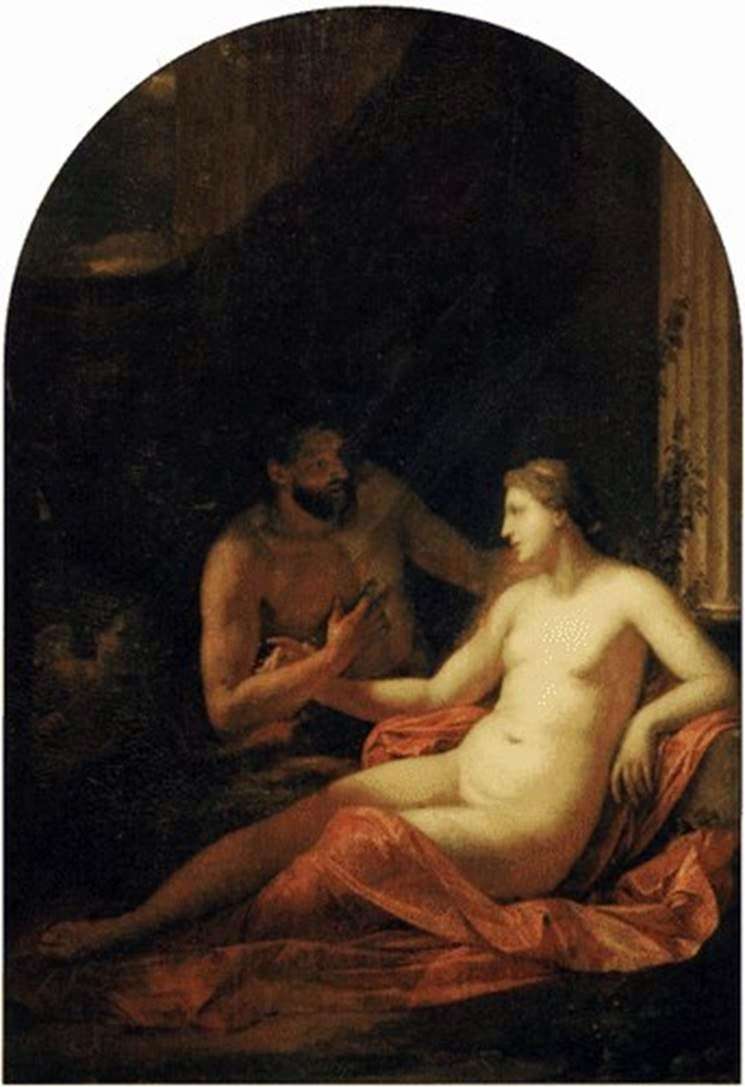 Hercules and Dejanira by Adrian van der Werff
Hercules and Dejanira by Adrian van der Werff